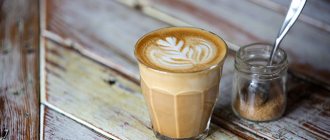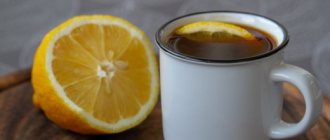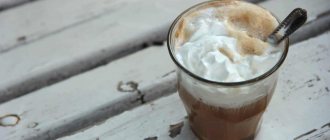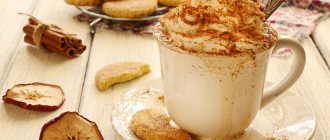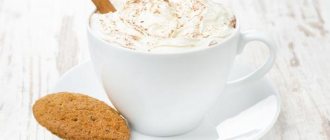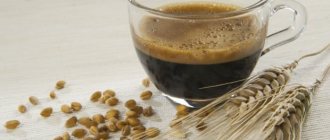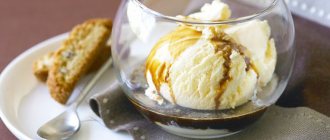Flat white is a coffee drink that was invented in the 1990s by New Zealand barista D. Townsend. For the first time, such coffee was presented to visitors in a cafe belonging to the DKD network group, of which the creator of flat white was a partner. The fashion for it in New Zealand grew every day. Then the drink began to be served in Australia, the United States of America, Great Britain, and England. Its popularity grew steadily, and after a few years it conquered the whole world with its taste.
Recipe history
Flat white coffee is a drink with history. The barista, through experimentation, selected the proportions of the main ingredients so that they did not drown out each other. To do this, Derek Townsend initially replaced a large layer of milk foam with a thin one. After this, the proportions of milk and coffee were changed. The amount of milk was reduced and the amount of coffee increased when compared to Latte and Cappuccino. To prepare Flat White, you need to maintain a 1:2 coffee to milk ratio.
Additionally, the barista reduced the extraction time (the process allows the flavor and aroma of ground coffee beans to be revealed) by 8 seconds. The above changes made it possible to preserve both the taste of coffee and milk in the drink.
Recipes
The traditional flat white recipe involves using a carob coffee maker to make espresso. In addition to it, you will need the following ingredients:
- 60-80 milliliters of espresso;
- 120-160 milliliters of foamed milk;
- a small amount of sugar.
To brew flat white at home, you must follow the recommendations:
- The carob coffee maker brews a double portion of espresso. After this, sugar is added to the drink. Everything is mixed until the granulated sugar is completely dissolved.
- The milk is heated to 65 degrees and then whipped until a homogeneous airy foam appears. It is best to do this using a blender or cappuccino maker. Then it is carefully poured into the espresso so that the height of the foam is 5-10 millimeters.
If you don't have a carob coffee maker, espresso can be prepared using a Turk or a regular coffee machine. In this case, the taste of the finished product may differ from the classic version.
Required ingredients:
- 100 milliliters of water;
- 2 teaspoons ground coffee beans;
- 120 milliliters of milk with a fat content of 3.2%;
- A small amount of sugar.
Preparation:
- Strong coffee is brewed in a Turk, drip or geyser coffee maker.
- If the crushed grains were cooked in a Turk, the liquid is filtered from the grounds. 60 milliliters of coffee are mixed with sugar and poured into a cup with a volume of 0.2 liters. Before doing this, it is advisable to warm the cup slightly.
- The milk is heated to 60-70 degrees, whipped using a blender for 3-5 minutes. If you have a cappuccino maker, you can use less fatty milk. It is then carefully poured into the coffee.
- If desired, the foam can be decorated with a pattern.
This coffee is served immediately after preparation. At the same time, it is not stirred.
Calories Flat White
The calorie content of the drink depends on the fat content of the milk used. With a milk fat concentration of 2.5-3.2%, the energy value of coffee will be 70-80 kcal. If the milk is skim, then the calorie content of Flat White will be approximately 35 kcal. You should also consider the amount of sugar in the drink. The energy value in one teaspoon of sugar is 34 kcal.
Flat white coffee, the calorie content of the drink depends on the type of milk and the presence of sugar.
For comparison, the calorie content of Latte coffee is 115 kcal, and Cappuccino 105 kcal.
Difference from other coffee drinks
Flat white coffee is a drink consisting of espresso and milk. Latte and Cappuccino coffees are also prepared with these ingredients. A comparative analysis of these drinks is discussed in the table below.
| Name of coffee | Proportions of ingredients used | Difference in taste |
| Cappuccino | The proportions of milk and coffee (simple espresso) are equal (60 ml each). In this case, the milk must be thoroughly whisked before adding. As a result, the drink contains less milk than milk foam, which is laid out in the form of a cone at the final stage of coffee preparation. The drink is usually served in cups with a volume of 150-180 ml. | The aroma and taste of the main ingredients mix and drown each other out. As a result, the drink does not have a pronounced milk or coffee taste and aroma. |
| Latte | The ratio of coffee (simple espresso) to milk in the drink is 1:3 (the recipe requires 60 ml of espresso and 180 ml of milk). Milk must be poured into a container with coffee in a very thin stream so that a foam approximately 1 cm thick forms on the surface of the drink. Coffee is served in cups of 250-300 ml. | The drink has a pronounced milky taste that overpowers the taste of coffee. |
| Flat White | The proportions of coffee (usually double espresso) and milk are 1:2 (standard volumes are 60 ml of coffee and 120 ml of milk). In this case, during the preparation process, you need to pour 10 ml of the total volume of milk and beat them until foam forms. The foam needs to be spread on top of the drink in an even thin layer last. The drink is served in cups with a volume of 150-180 ml. | The drink completely retains the taste of coffee and milk, which do not mix and do not suppress each other. |
The main external difference between the drinks is the different proportions of milk and coffee, as well as the height of the milk foam.
Important preparation nuances
The main feature of flat white is its foam, during the preparation of which you need to know some nuances:
- the milk needs to be heated to 65 degrees, avoiding boiling;
- whisk the milk until the foam rises by 0.5-1 cm;
- the foam should be finely bubbled.
To achieve the required milk foam structure, it is recommended to use a cappuccino machine.
This device allows you to whip milk of any fat content to a homogeneous white foam. If you don’t have a cappuccino maker, you can use a mixer or blender.
If large bubbles appear on the milk foam, its structure is no longer smooth and even, this indicates improper preparation. Therefore, you should not rush while frothing milk: it is best to spend 3-5 minutes on this.
Ingredient Requirements
The main ingredients of Flat White coffee are milk and coffee beans.
To ensure that the ingredients do not interrupt each other’s taste, but rather emphasize each other, the following requirements are imposed on them:
- To make coffee, use only Arabica beans, without including Robusta (the beans have a very tart and strong taste). If desired, you can mix several types of Arabica beans. For example, Indian and Kenyan types, which are distinguished by the presence of a chocolate aftertaste;
- The roasting of the beans should be light or medium. Since coffee made from dark roasted beans does not taste well with milk and gives the drink a pronounced bitterness;
- The grinding of the grains should be fine or medium. So that espresso easily reveals the taste and aroma of coffee;
- Beans should be roasted and ground before preparing the drink to preserve the coffee aroma;
- water for making espresso should not only be non-chlorinated, but also soft. Acceptable mineralization is in the range of 75-250 mg/l;
- espresso before preparing the drink should have a temperature in the range of 35-70 degrees;
- It is recommended to use only whole milk. That is, apart from heat treatment (not boiling), the milk is not processed in any way and nothing is added to it;
- You cannot use boiled milk for cooking, as otherwise you will not get foam with the desired texture. The permissible milk temperature range before preparing the drink is 60-70 degrees;
- The recommended milk fat concentration is 2.5-3.2%. With a higher fat content, milk can interrupt the coffee taste and aroma. Lower fat content means additional processing of milk in the form of skimming.
It is also important to maintain the proportions of the main ingredients. Otherwise, the taste of the drink will not correspond to what is declared.
History of origin
Flat white coffee was first prepared in the 1980s by an unknown New Zealand barista who experimented with the combination of coffee and milk.
He set himself the task of preserving and emphasizing the pristine taste of white coffee with a brighter interpretation of coffee notes, as well as the abandonment of abundant milk foam.
The bright, invigorating recipe for “coffee with milk” was liked by the guests of the coffee shop: after some time it was prepared in all cafes in Australia and New Zealand.
Flat white owes its worldwide fame to coffee lovers in Great Britain: the British liked it so much that some time later its name in Britain was synonymous with quality coffee.
Many Europeans who ordered coffee white were dissatisfied with the drink they brought: the cappuccino was topped with a huge head of milk foam, while there was practically no coffee.
The situation was no better with the latte, in which the coffee taste was drowned out by milk. Baristas working in large chain establishments (McDonald's, Starbucks, etc.) knew how to prepare only such classic variations, as well as the black version.
The appearance of a drink balanced in proportions “coffee and milk”, in which there was no foam, created a sensation. Due to its appearance - the absence of a mountain of foam similar to a meringue - the name was assigned to the drink, literally translated as “flat white”.
By the end of the 1990s, “flat coffee” became part of the daily diet of coffee bean connoisseurs in Europe and the United States.
Flat white became a cult drink, distributed throughout all cafes and restaurants of the Old and New Worlds thanks to the small London coffee shop Flat White, opened in 2005 by New Zealand entrepreneurs Cameron McClure and James Gurnsey. Over the course of a day, more than 700 servings of the original drink were ordered from the cafe.
Characteristics of Flat White coffee
Flat White, when prepared correctly, retains the flavor of milk and coffee beans. That is, the drink turns out strong and at the same time gentle. Due to the use of double espresso, drinking coffee more than 2 times a day is not recommended. Classic Flat White has a slight bitterness, which is muted by milk foam. The tonic effect after drinking the drink is high (higher than cappuccino) due to the double dosage of coffee beans. The approximate coffee strength of the drink is 80 mg per cup.
It is possible to prepare analogues of Flat White coffee using almond or coconut milk. At the same time, the taste and texture of the drink will differ from the original.
Homemade recipes
Violation of proportions or incorrect choice of ingredients will spoil the taste and texture of coffee.
Classic recipe
To prepare classic Flat White coffee, you need to prepare the following ingredients (proportions are indicated for one serving of the drink):
- Arabica beans (or a combination of Arabica beans) – 14 g;
- water purified from impurities (soft) – 60 ml;
- whole cow's milk – 110 ml;
- granulated sugar (cane) - the amount of the ingredient should be varied to taste.
If you don’t have a coffee machine, you will need to prepare 60 ml of ready-made espresso and 110 ml of milk.
Next, the coffee brewing process consists of the following steps:
- Arabica beans should be roasted. Finished beans should be light or medium roasted.
- Then you need to grind the Arabica beans in a coffee grinder to a medium or fine grind.
- Place crushed Arabica beans, water and granulated sugar into a coffee maker or coffee machine. Set the espresso brewing program.
- While the coffee is preparing, you should heat the milk to a temperature of 60 degrees.
- Divide the milk into 2 equal parts and beat one part with a mixer or cappuccino maker until foam forms.
- Carefully combine both parts of milk.
- Next, pour the espresso into a ceramic cup and gradually pour milk into it. When poured correctly, some of the milk will mix with the coffee, and some will form a thin milk foam on the surface. It is important to pour milk into coffee, and not vice versa.
It is recommended to drink coffee warm; as it cools, the coffee will fully reveal the desired taste and aroma. If you don’t have a coffee machine or coffee maker, espresso can be brewed in a Turk (the proportions of the products are similar). To do this, you need to pour the prepared Arabica coffee into a dry coffee pot and heat the coffee over moderate heat for no more than 10 seconds.
Next, you need to pour granulated sugar into the Turk and pour in water heated to 45 degrees. Put the Turk on the fire. When foam appears, the Turk should immediately be removed from the heat and wait until the foam settles. Then the Turk needs to be put back on the fire until the foam forms again. Next, the Turk needs to be removed from the heat again; when the foam settles, the coffee can be poured into a ceramic cup.
When preparing espresso in a Turk, the taste of Flat White coffee will differ from the original.
Flat White Mocha
The drink has a delicate chocolate and creamy taste.
To prepare it (for 1 cup), you will need products from the following list:
- finely ground roasted Arabica beans – 18 g;
- water purified from impurities – 90 ml;
- whole milk with a fat content of 3.2% - 45 ml;
- ready-made hot chocolate (white) – 45 ml;
- whipped cream (fat content 33%) – 45 ml;
- grated milk chocolate - the amount of the ingredient should be varied according to taste.
If desired, milk chocolate can be replaced with white or dark chocolate.
After preparing the ingredients, the sequential preparation of coffee consists of the following steps:
- Place Arabica and water in the coffee machine. Install the espresso program.
- Pour the hot chocolate into the pitcher (container for whipping milk drinks) and lightly whisk it.
- Pour the hot chocolate into a tall coffee glass.
- Next, you need to heat the milk to 70 degrees and carefully pour it into a glass of hot chocolate. It is recommended to carry out manipulations with a spoon.
- Similarly, using a spoon, pour espresso on top of the milk.
- Then you need to whip the cream and pour it on top of the espresso.
Decorate the finished drink with grated chocolate.
How to make a New Zealand drink
While everything is clear with the preparation of coffee for flat whites, there are disagreements with the creation of the correct foam.
Reference: the ideal proportions for preparing a flat white are considered to be 50 - 60 ml of double espresso and 100 - 110 ml of milk. Foamed milk is poured over the coffee, creating a flat, even surface.
What kind of coffee is required
- preference is given to soft varieties of Arabica (from Guatemala, Colombia, Ethiopia, Kenya) of light roast; medium roast is allowed, but in no case dark. Such a product will contrast too much with milk;
- Coffee should preferably be roasted fresh, ideally immediately before grinding. In this case, you will eliminate the bitterness and achieve an amazing aroma of the drink;
- Grinding of grains is required fine, fine;
- To prepare espresso, non-chlorinated pure water with a soft degree of mineralization (up to 250 mg/l) is used.
The coffee machine brews double espresso - “doppio”; if you want a richer coffee taste, it is not forbidden to prepare “triple espresso” - triple espresso. The volume of the drink in the first case is 60 ml, in the second 90 ml. A rich, thick ristretto of the same volume will also work.
It takes longer to brew coffee in a Turkish coffee pot, but the quality of the drink will not be inferior to the mechanical method of preparing it. Strong, aromatic oriental coffee after straining will be an excellent basis for a flat white.
Important: when brewing coffee in a Turk, be sure to take into account the concentration; it should exceed the traditional one (a teaspoon of ground coffee per 50–60 ml of water) by at least 2 times.
If you want to sweeten your cocktail, add sugar to hot coffee and stir until the crystals are completely dissolved.
Milk controversy
There are different approaches to preparing foam. The requirements for the quality of milk are unanimous: it must be fresh, whole, with a fat content of 2.5 - 3.5%. There is one more episode with which the manufacturers agree, but we will attribute it to bartenders who have professional equipment at hand or are happy owners of expensive coffee machines. Smart units have a hard-working cappuccino maker, which with a powerful jet of hot steam will quickly whip up the foam of the correct structure. You just need to get used to the process a little.
If you have a milk frother (mini mixer) or a French press at hand, that’s also enough. You can do this:
- Divide a portion of milk into 2 equal parts. Heat one on the stove or in the microwave. The temperature of the product should not exceed 70°, and should not be brought to a boil under any circumstances. While the first part is heating, the second is whipping, but not too much. We create a homogeneous, soft, plush-looking foam. The heated milk is then poured into the finished espresso and the frothed milk is placed on top. Its upper border should coincide with the edge of the cup. It turns out to be a flat white field and a great desire to decorate it with something. Well, please! Cocoa powder, light toppings, personal artistic abilities at your service.
- Whip all the milk into a thick, tight foam. The main part (about 2/3) is carefully and patiently mixed with espresso in a large glass. The consistency of the coffee becomes very soft and airy. The finished coffee and milk “sbiten” is poured into a thick-walled ceramic cup, and the rest of the foam is placed on top.
- Experienced baristas, who do not have enough time for the above-described manipulations, quickly prepare the milk additive for the cocktail. The entire volume of milk is whipped until a 1 cm layer of foam is obtained. It is poured into a cup of coffee. The milk quickly penetrates into the coffee layer, leaving a white, dense and flat “plain” on top.
From personal experience. I like to make foam for flat whites using a French press. I take the milk out of the refrigerator. I heat approximately ¾ of its volume in the microwave for no more than 1 minute at medium power. I beat a small part of it cold in a French press, I have a small one, 300 ml. Cold milk froths very quickly, the foam is beautiful, dense, practically free of bubbles - just what you need. It also needs to be heated for just a few seconds directly in the glass flask of the French press. Further according to plan: pour warm milk into strong coffee, place foam on top, form not a dome, but a flat lid. It is better to sweeten coffee with dark cane sugar; it adds a pleasant caramel note to the taste.
The calorie content of flat white coffee depends on the fat content of the milk and the presence of sugar. By using skim milk for preparation, without adding sugar, and drinking 100 ml of the drink, you will receive no more than 50 - 60 Kcal. Milk fat content of 3.2% will increase the number of calories to 75. The main nutritional value of the drink lies in the proteins and fats contained in cow's milk.
Signs of improper preparation
Flat white coffee is a drink that has no analogues in taste.
If the choice of ingredients is violated or the rules for their preparation and mixing are not followed, the following deviations are noted:
- pronounced bitterness of the drink. Bitterness can be caused by choosing the wrong type of coffee bean or over-roasting the Arabica;
- lack of milk foam with the desired texture. The defect is typical for boiled milk;
- foam too high. The milk was not frothed correctly;
- There is little taste of coffee. Violation of the proportions of milk and coffee or insufficient espresso strength;
- there is a taste of baked milk. This symptom is present if the milk has been heated above 70 degrees;
- the taste of coffee mixed with milk. The defect is noted if milk was initially poured into the cup, and then coffee.
Also, if coffee is consumed immediately after preparation, the taste will differ from the original. According to the rules, the drink should steep for approximately 10 minutes.
How to serve and drink coffee?
Flat White is usually prepared and served in wide 200 ml ceramic cups without stirring. Otherwise, the milk foam, which softens the coffee taste, will settle. It is recommended to serve the drink with a chocolate bar (some of the chocolate can be grated on top of the milk foam), nut cookies or berry jelly.
It is important that it is recommended to drink coffee in the morning, no more than 2 cups per day and no more than 4 cups per week, due to the high caffeine content.
Flat White will have a rich coffee taste if double espresso is used to prepare it, and there is a thin milk foam on the surface. The advantage of this drink is the convenience of its decoration. Coffee foam preserves any patterns.
History of appearance
Since flat white is a relatively young coffee cocktail, the history of its appearance is generally known. The first such drink was brewed by barista Derek Townsend in the mid-90s of the last century in Auckland. He was one of the owners of the DKD coffee shop chain.
While roasting coffee and trying new combinations for his menu, Derek mixed doppio with milk whipped until smooth in a 1:2 ratio. Customers liked the drink so much that it was not only included in the menu of chain coffee shops, but was also noticed by competitors. Soon the coffee cocktail was being drunk all over Auckland, then it became famous in Australia, and eventually “moved” to other continents.
On a note! The coffee chain Starbucks made the drink even more popular when it included it in its menu. There are Starbucks branches in almost every city in the world, so flat whites have become available even in remote provinces.

